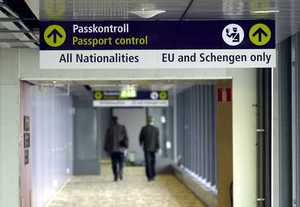
During the 1980 a debate opened up about the meaning of the concept of "free movement of persons". Some Member States felt that this should apply to EU citizens only, which would involve keeping internal border checks in order to distinguish between citizens of the EU and non-EU nationals. Others argued in favour of free movement for everyone, which would mean an end to internal border checks altogether. Since the Member States found it impossible to reach an agreement, France, Germany, Belgium, Luxembourg and the Netherlands decided in 1985 to create a territory without internal borders. This became known as the "Schengen area". The name Schengen was taken from the name of the town in Luxembourg where the first agreements were signed. This intergovernmental cooperation expanded to include 13 countries in 1997, following the signing of the Treaty of Amsterdam, which incorporated into EU law on 1 May 1999 the decisions taken since 1985 by Schengen group members and the associated working structures.
14 June 1985
The first agreement between the five original group members was signed.
19 June 1990
A further convention was drafted and signed. When it came into effect in 1995, it abolished the internal borders of the signatory statesand created a single external border where immigration checks for the Schengen area are carried out in accordance with a single set of rules. Common rules regarding visas, asylum rights and checks at external borders were adopted to allow the free movement of persons within the signatory states without disturbing law and order.
Accordingly, in order to reconcile freedom and security, this freedom of movement was accompanied by so-called "compensatory" measures. This involved improving coordination between the police, customs and the judiciary and taking necessary measures to combat important problems such as terrorism and organised crime. In order to make this possible, an information system known as the Schengen Information System (SIS) was set up to exchange data on people's identities and descriptions of objects which are either stolen or lost. Little by little, the Schengen area has been extended to include every Member State. Italy signed the agreement on 27 November 1990, Spain and Portugal joined on 25 June 1991, Greece followed on 6 November 1992, then Austria on 28 April 1995 and finally Denmark, Finland and Sweden joined on 19 December 1996. The last extension of the Schengen border-free zone took place on 21 December 2007, when the border controls were abolished at the internal land and sea borders for nine states: Slovenia, Hungary, Poland, Czech, Slovakia, Estonia, Latvia, Lithuania, and Malta. The air surveillance of these states will be abolished by 30 March 2008. The Schengen zone will therefore have 24 members, 22 of them are members of the European Union.
 Measures adopted by Schengen group members
Measures adopted by Schengen group membersAmong the main measures are: